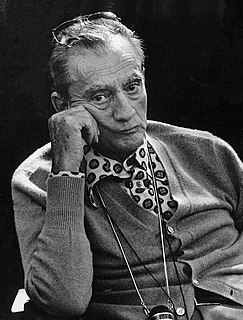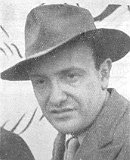Related Research Articles

Luchino Visconti di Modrone, Count of Lonate Pozzolo was an Italian filmmaker, stage director, and screenwriter. A major figure of Italian art and culture in the mid-20th century, Visconti was one of the fathers of cinematic neorealism, but later moved towards luxurious, sweeping epics dealing with themes of beauty, decadence, death, and European history, especially the decay of the nobility and the bourgeoisie. He was the recipient of many accolades, including the Palme d'Or and the Golden Lion, and many of his works are regarded as highly-influential to future generations of filmmakers.

Giovanni BattistaPiranesi was an Italian Classical archaeologist, architect, and artist, famous for his etchings of Rome and of fictitious and atmospheric "prisons". He was the father of Francesco Piranesi, Laura Piranesi and Pietro Piranesi.

Luigi Federzoni was a twentieth-century Italian nationalist and later Fascist politician.

Cinzia Giorgio is an Italian writer.

Scuola romana or Scuola di via Cavour was a 20th-century art movement defined by a group of painters within Expressionism and active in Rome between 1928 and 1945, and with a second phase in the mid-1950s.

Armando Spadini was an Italian painter and one of the representatives of the so-called Scuola Romana.

Santi Celso e Giuliano is a minor basilica and papal chapel of the Diocese of Rome in the care of the Institute of Christ the King Sovereign Priest. It has held its basilica status by custom and practice since ancient times. The church is located on Vicolo del Curato number 12, just off Via del Banco di Santo Spirito, the road leading to Ponte Sant'Angelo.

Mario Alicata was an Italian Partisan, literary critic and politician.
Claudiu Isopescu was an Austro-Hungarian-born Romanian literary historian and translator.
Franco Buffoni (1948) is an Italian poet, translator and professor of literary criticism and comparative literature. He was born in Gallarate (Lombardy) and lives in Rome.
Mario Pannunzio was an Italian journalist and politician. As a journalist he was the director in charge of the daily newspaper Risorgimento Liberale in the 1940s and of the weekly political magazine Il Mondo in the 1950s. As a politician he was a co-founder of the revived Italian Liberal Party in the 1940s and then of the Radical Party in 1955.

Vittore Branca was a philologist, literary critic, and Italian academic. He was a professor emeritus of Italian literature at the University of Padua until his death in 2004, and one of the most acclaimed contemporary scholars of Italian author and poet Giovanni Boccaccio.
La Fiera Letteraria was a weekly Italian magazine of letters, sciences and arts. It was founded in 1925 with the subtitle Weekly Magazine of Letters, Sciences and Arts and was published until 1977.
Enrico Falqui was an Italian writer and literary critic.
Emilio Cecchi was an Italian literary critic, art critic and screenwriter. One English language source describes him as "an 'official' - although radically anti-academic - intellectual".
Leonetta Cecchi Pieraccini was an Italian painter, originally from Tuscany. Like many artists of the period, she is known principally for portraiture, employing watercolours or oils. Her actual output was more diverse, however. She produced a number of landscapes and monotypes. She was also a diligent diarist, and during the later part of her life published several books, which were autobiographical in character. Her work resonated with art lovers and commentators during the first and middle parts of the twentieth century, through which she lived, surviving to a good age. By the time she died, to the regret of admirers, her work was beginning to fall out of favour, however.
Carlo Muscetta was a poet who became better known as a literary critic and, later, as an editor of literary magazines. He also had a parallel career in teaching, employed as a university professor of Literature successively at Catania, Paris and Rome. During the 1960s and 70s he came to wider prominence as a free-thinking Marxist commentator.

Antonio Baldini was an Italian journalist, literary critic and writer.

Ugo Ojetti was an Italian journalist-commentator and author. He wrote prolifically on a wide range of topics. His output also includes short stories and at least seven novels. Nevertheless, during his later decades he increasingly focused on arts criticism, and it is as an art critic that he is most frequently identified in the more generalist sources. Widely admired for his mastery of language, and especially of Italian, he is also commended by admirers as an exceptionally effective aphorist.
References
- ↑ Modernism, Christianity and Apocalypse. BRILL. 31 October 2014. ISBN 9789004282285.
- ↑ Moody, A. David (24 September 2015). Ezra Pound: Poet: Volume III: The Tragic Years 1939-1972. Oxford University Press. ISBN 9780191058974.
- ↑ Bell, Michael; Poellner, Peter (1998). Myth and the Making of Modernity: The Problem of Grounding in Early Twentieth-century Literature. Rodopi. ISBN 9042005831.